Osteoporosis
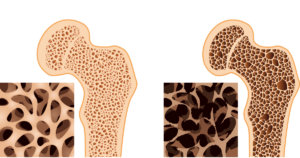 Osteoporosis affects an estimated 75 million people in the USA, Europe, and Japan, with 1 in 3 women and 1 in 5 men over the age of 50 experiencing osteoporotic fractures. It is a disease of aging (see post on aging. It is more common in women. Other factors that increase risk include: Family history of osteoporosis, Menopause and hysterectomy, Long-term glucocorticoid therapy (pregnisone), and Rheumatoid arthritis •
Osteoporosis affects an estimated 75 million people in the USA, Europe, and Japan, with 1 in 3 women and 1 in 5 men over the age of 50 experiencing osteoporotic fractures. It is a disease of aging (see post on aging. It is more common in women. Other factors that increase risk include: Family history of osteoporosis, Menopause and hysterectomy, Long-term glucocorticoid therapy (pregnisone), and Rheumatoid arthritis •
Bone tissue is largely collagen protein that is mineralized with hexagonal crystals of hydroxyapatite (calcium and phosphorus). This combination gives bone its strength. When collagen and hydroxyapatite are lost the bone becomes fragile.
DXA scan – is a diagnostic low dose x-ray that measures the amount of minerals in the bone (which block the x-rays. A T-score of −2.5 or lower indicates osteoporosis. Osteopenia is the less severe loss of bone density and is usually a precursor to osteoporosis.
Lifestyle factors that can contribute to osteoporosis.
- Alcohol – reduce alcohol consumption.
- Smoking – stop smoking.
- Low body mass index and Poor nutrition, low mineral intake, and Eating disorders – Support maintenance of a healthy body weight, improve diet and supplement nutrients.
- Low omega 3 fatty acids in diet – This can increase inflammation which increases bone loss.
- Insufficient exercise – Add weight-bearing exercise, consider whole body vibration therapy.
Therapeutic Diet and Nutritional Considerations
- Vitamin D is needed by bone. Without supplementation or intense sun most people are deficient. Support optimal vitamin D status through D3 supplements and safe sun exposure.
- Vitamin K2 is a bone protective vitamin
- Tocotrienols are a form of vitamin E that has been shown to be particularly effective and decreasing bone loss.
- GG (geranylgeraniol) – A unique substance that can support protein metabolism in aging and aging related diseases.
- Omega 3 fatty acids (EPA and DHA) modulate inflammation – see post on Inflammation.
- Protein: Adequate protein is needed to produce collagen and support bone health (Beef, bison, chicken, turkey, lamb, fish, shellfish, beans, legumes, nuts, seeds).
- Estrogen and Isoflavones (phytoestrogens – from plants) can support bone metabolism (eg. Genistin and Ipriflavone).
- Minerals
- Calcium – Is the main mineral of bone. Take 1,000 mg to 1,300 mg daily (Yogurt, sardines, cheese, salmon, turnip greens, kale).
- Magnesium – Magnesium is needed to properly use calcium. It is a common deficiency. Take 310 mg to 420 mg daily (Kale, spinach, Swiss chard, pumpkin seeds, almonds, cashews, black beans, dark chocolate).
- Trace Minerals – such as boron and silicon help bone metabolism.
Supplement Protocol
Below are a few specific supplements that can achieve these goals. Specific dosing, additional information and ordering information (and a discount on all orders) can be found at my FullScript Dispensory. Just create your account by clicking below. Then go to Recommendations – Protocols – Osteoporosis.
Dr. Michels FullScript Dispensory – us.fullscript.com/welcome/JordanMichels
Osteoben® from Designs for Health – is formulated to address the pathophysiology of osteopenia and osteoporosis, providing patients with the proper bone-supportive nutritional requirements. Besides calcium, Magnesium and other minerals osteoben contains the isoflavone genistein (a phytoestrogen), which works to target the decreased BMD (bone mineral density) seen in osteopenia and osteoporosis.
Collagen Peptides from Vital Proteins’- are sourced from grass-fed, pasture-raised bovine hides to ensure a high-quality source of this ancient nutrient. Collagen is the most abundant protein in the body supporting the health and vitality of your skin, hair, nails, bones, and joints.* These peptides are easily digestible and soluble in cold or hot liquids.
K2 MK-7 and D3 – from Protocol for Life Balance – Research indicates that a synergistic relationship exists between vitamin K2 and vitamin D3, especially in terms of bone strength and cardiovascular health.* While vitamin D3 is recognized for its role in calcium absorption and metabolism, it is vitamin K2 that directs calcium to bones rather than joint spaces and arteries.* This product is formulated with a clinically relevant dose of MK-7 (5000 iu D3 and 180 mcg. K2)
Annatto-E™ GG – from Designs for Health- is a combination of two ingredients: 150 mg of annatto tocotrienols, a unique tocopherol-free, tocotrienols-only product, featuring tocotrienols sourced from the annatto tree; and 150 mg of geranylgeraniol (GG), a compound that plays critical roles in numerous biological processes affecting organs and tissues throughout the body.
OmegAvail™ Hi-Po – from Designs for Health – provides a potent 1600 mg of EPA/DHA per serving (two softgels).
Trace Minerals – from Pure Encapsulations – is a blend of essential minerals to support nutrient metabolism and cellular function throughout the body.
Inflammation
What is Inflammation
Inflammation is an essential biological process of all animals. It is involved in healing, fighting infection. It involves increased blood flow, immune activation. Many diseases and aging processes are inflammatory in nature. The inflammation response can become excessive, over-generalized, and chronic. Several factors can increase these tendencies such as aging, obesity, excessive or insufficient exercise, smoking, and diet.
Excess inflammation can involve almost any tissues including the heart and circulatory system, the musculoskeletal system, the brain and nervous system, the digestive system, the lungs and respiratory system. Some of the common diseases where inflammation in involved include IBS, diabetes, cancer, atherosclerosis, and Alzheimer’s disease. Any disease ending in “-itis” are inflammatory by definition. Many body pains are caused or worsened by inflammation. A common biomarker of inflammation is a blood test called C-reactive protein (CRP). Erythrocyte sedimentation rate (ESR, high white blood cell count may also indicate inflammation.
Physiology (optional reading)
A variety of chemical mediators from circulation system, inflammatory cells, and injured tissue actively contribute to and adjust the inflammatory response. The released chemical mediators include (1) vasoactive amines such as histamine and serotonin, (2) peptide (e.g., cytokine, bradykinin), and (3) eicosanoids (e.g., thromboxanes, leukotrienes, and prostaglandins). COX-2 is the enzyme that makes the prostaglandins involved in pain and inflammation. This enzyme is blocked by many anti-inflammatory and pain medications (often with side effects).
Dietary Factors:
Good Fats:
-
- Mono-unsaturated fats found in olive oil are anti-inflammatory. These are also found in Avocado oil and Hazel nut oil.
- Omega 3 fatty acids (EPA, DHA and ALA) found in cold-water fish oils are anti-inflammatory.
Bad Fats:
-
- Omega 6 fatty acids found in most vegetable oils are pro-inflammatory.
- Trans fats (produced by hydrogenation of vegetable oils) are pro-inflammatory.
Good Carbohydrates:
-
- Certain fibers that promote healthy microbiota called prebiotics can reduce inflammation by producing certain substances such as fatty acids in the gut.
Bad Carbohydrates:
-
- Excess sugars and high-glycemic carbohydrates can cause high blood sugar which is very pro-inflammatory.
Milk and dairy:
-
- A1 milk is much more inflammatory than A2 milk. These names refer to two types of casein, the main protein of milk. A2 is the original casein and is found in sheep milk and most older varieties of dairy cows such as Guernsey, Jersey. Goat milk does not have casein at all. Newer varieties of cows such as Holstein have a mutation that goes along with the higher milk production of these A1 breeds. These findings for cows are not 100% due to interbreeding, unless the herds have been genetically tested.
Anti-Nutrients
-
- Glutens in wheat, barley, and rye can cause reactions that damage the intestinal lining causing absorption of undigested foods that promote inflammation in some individuals.
- Lectins found in the seeds and skins of many foods can cause reactions and inflammation in many people. These substances are especially found in legumes, grains, and nightshades (tomato, potato, peppers, and eggplant). Dr. Stephen Gundry has written much on this subject such as reducing lectins by peeling, removing seeds, pressure cooking, sprouting and fermenting.
Micronutrients:
-
- Magnesium, vitamin C, vitamin D3, Vitamin E (tocotrienals), Alpha lipoic acid
- Cartenoids, including carotene, lycopene, lutein, zeaxanthin.
- Polyphenols:
- Flavonoids: flavanols, flavonols, flavanones, flavones, isoflavones, anthocyanidins and catechins. These are found in many fruits and include compounds such as quercetin. Flavonoids are the chemicals that often give fruit its color. Curcumin is a flavonoid from turmeric that is a potent anti-inflammatory. Rosemary and Boswellia (frankincence) also contain anti-inflammatory flavonoids.
- Stilbenes such as resveratrol (found in grape skins) have many biological activities including anti-inflammatory.
- Sulforaphane is a anti-inflammatory chemical found in brassicas. It has been shown to block the inflammation mediator cox 2.
- SAMe – S-adenosylmethionine is naturally found in the body. Studies have shown it can stimulate cartilage healing and reduce pain and inflammation. Check with your doctor if you are taking prescription anti-depressants or narcotics.
Prebiotics and Probiotics:
-
- Certain types of fibers and digestion resistant starches can provide food for bacteria in the gut (prebiotics). Certain strains of bacteria can convert these foods into short chain fatty acids (SCFA). These SCFA are fuel for the intestinal epithelial cells and can regulate inflammation. Certain probiotic strains can help facilitate this process.
Dietary modifications to reduce inflammation:
- Using olive oil, avocado oil. Most nuts, pumpkin and sesame seeds, avocados. Avoid, trans-fats, other seed-oils (safflower, sunflower)
- Eating cold water fish such as wild salmon, herring and anchovies. Farmed fish is usually lower in omega 3 fatty acids.
- Avoiding sugar, low glycemic carbohydrates. Use of sugar alcohols (e.g., Erythritol) and stevia is fine.
- Animal products, such as beef, chicken, eggs and dairy should be pasture fed as much as possible (as pasture is much higher in omega 3s as seeds). Lamb is naturally pasture fed.
- Dairy products should come from goats, sheep, or A2 herds to minimize A1 casein.
- Cheeses from Southern Europe (Spain, France, Switzerland, Italy) are considered to be primarily A2.
- Milk from genetically tested A2 herds is available in many supermarkets. A1 cows have become the dominant breeds in the United States.
- Consider a gluten-free diet or minimizing wheat and related products.
- Consider minimizing all grains, legumes, and nightshades. Consider pressure cooking and other methods to reduce lectins in food (see Dr. S. Gundry – The Plant Paradox).
- Consume high flavonoid / low sugar fruits such as berries, dark chocolate.
- Cruciferous vegetables. tea (black, green, white, oolong) contain anti-inflammatory Sulforaphane.
- Consume a variety of high fiber foods and resistant starches.
- Turmeric contains a compound called curcumin which is a potent anti-inflammatory. Ginger is closely related to turmeric and also contains anti-inflammatory compounds. Consume with fats to increase absorption.
Supplements: Details, ordering and discount can be found at my Fullscript Dispensary:
www.us.fullscript.com/welcome/JordanMichels (click here)
Login to your account (or create account)… Recommendations… Protocols… Inflammation… select desired products… purchase at a discount
-
Combination Formulas
- Inflammatone: Combines enzymes, herbs, and flavonoids capsules
- Antioxidant Formula: Vitamins, minerals, carotene, carotenoids capsules
-
Turmeric: Turmeric is difficult to Use of
- Curcumin– standardized turmeric capsules with biopiperine (from black pepper for better absorption) capsules
- Turmero-Active: an emulsified turmeric preparation for best absorption liquid
-
Omega 3’s
- OmegAvail Hi-Po – Fish oils (DHA EPA) capsules
- OmegAvail Smoothie – Fish oils emulsified in fruit base for taste and easy digestion.
- Omega 3 Vegan – High absorption omega 3s capsules from marine algae capsules
-
Prebiotics and Probiotics:
- Poly-Prebiotic powder: A combination of fibers and polyphenols
- Tomorrows Nutrition PRO Sunfiber: Enzymatically digested guar gum has shown excellent prebiotic properties (powder).
- Ther-Biotic Synbiotic: 7 species probiotics plus prebiotic (sunfiber) for comprehensive microbiome, immune, and healthy inflammation support (capsules)
Other Micronutrients
-
- Magnesium Chelate absorbable magnesium (powder or capsules)
- Vitamin C
- C+ Biofizz – Vitamin C with flavonoids powder
- Bufferred Viamin C capsules
- Vitamin D3 – 5000 iu capsules
- Annatto-E Synergy – Tocotrienals from Annatto (capsules)
- SAMe
Additional information can be found at the following articles:
Paleo Diet:
Anti-Aging: (coming soon)
Some Thoughts on the Covid 19 Vaccines
Covid 19 is a very serious illness that can result in death, serious chronic symptoms. It is highly contagious. It is currently in a phase known as a pandemic, meaning it is spreading fast and wide. As the population immunity grows over time at some point it will almost certainly become more like a regular flu or perhaps like a common cold. As a matter of fact, there are at least four other Corona viruses that can cause the common cold. Almost certainly, these other coronaviruses began as serious pandemics when they first infected humans.
Fortunately, pandemics always end. They always end because of population immunity. Population immunity only occurs by two mechanisms. The first way and only way for most of the time humans have walked the earth is through infection. The second, only invented a couple hundred years ago is vaccines.
Natural infection results in deaths, severe illness, chronic symptoms in some people. These risks are worse in the elderly and sickly and obese. But there are very real risks in otherwise healthy people including children. Natural infection also increases the presence of virus in the community thus putting others at increased risk, and further necessitating the need for masking, distancing, avoiding indoor spaces and limiting gatherings. Natural infection and the increase viral numbers this causes also increases the likelihood of further viral mutations which potentially the rates and seriousness of infections and lengthen the duration of the pandemic.
Vaccines work by teaching the immune system about a potential invader using various mechanisms short of a full infection. No vaccine is 100% risk free. All vaccines have risks which must be weighed against the risks. It should never be assumed that the benefit of any given medical intervention outweighs the risks.
How should we weigh the risks-benefits of the Covid vaccines? In the case of Covid, the math is simple. The benefits are high. In a pandemic almost everyone will get infected in the coming years. Just like the Native Americans when small pox and measles arrived, we have no preexisting immunity. The treatment options, although improving, are limited.
The main treatments are offering support while the immune system works to control the virus and heal. The best interventions are the monoclonal antibodies, but they are very expensive and must be given in a timely way. Some alternative treatments have some potential to help, but none have been shown so far to be highly effective in controlled studies and using untested treatments especially when very sick is potentially dangerous. It is far safer to avoid the Covid 19 disease and the illness, death, and long-term symptoms that are a serious risk.
All the approved vaccines offer strong immunity, in most cases preventing infection, and in the case of breakthrough infection the vaccines prevent almost all serious illness and death. The risks are low. These vaccines are based on new remarkable technologies that allow for rapid development. They have been studied for safety and optimal dosing. Studies have shown very low incidence of serious side effects and delayed side effects from vaccines generally are very unusual.
Some people believe they don’t need a vaccine because they have had Covid 19. There is some merit to this point, as many who have had covid probably do have good immunity to further infection. But the only way to be fairly certain of a past infection is a past positive PCR test and even this is not conclusive. We just don’t have any good tests in common use that can measure your Covid immunity status. Also, many folks who have long covid symptoms have reported that their symptoms resolved or improved following vaccination. Several theories might explain this, but research is ongoing.
Widespread immunity is the only thing that will stop this or any other pandemic. This immunity can only come about from natural infection and vaccines. In this case, both will play a vital role. Clearly the best way to create community and individual immunity with the lease amount of death and suffering is the vaccines. If you have not already done so, please protect yourself and others by considering the vaccine now.
Sincerely,
Jordan L. Michels, DC
We’re Open

Greetings Patients and Families,
I hope this note finds you well. My heart reaches out to all who have suffered during these times. I know many of you are having financial and health challenges and feeling the stress of change. Also many of us are afraid of what lies ahead and filled with worry for others. May we all come through this stronger and wiser with more compassion for ourselves and others.
We have a few changes that I thought everyone should know about. In keeping with scientific evidence, common sense, and the guidance of the Oregon Health Authorities we will be doing the following. Some things are still in flux. Please check here for the most current information.
- We are open for business.
- Please do not come if you have symptoms of Cough, fever, or sore throat. Call or text the 541-687-9528 and follow the prompts to speak to Janene or Dr. Michels. If you need to miss an appointment please call or text before hand and you will not be charged. For the CDC list of symptoms click here.
- I will be wearing a mask and we expect you to as well. Try to bring one that will be comfortable lying face down on the chiropractic table. If you don’t have a suitable mask we have inexpensive disposable masks available here.
- We will space appointments in an effort to have only one patient in the office at a time. If you plan on bringing anyone with you please let us know in advance. If you come to the office and the previous patient is still here please wait in the outside porch area or in your car.
- We will sanitize the treatment room after every patient. There are tissues outside and inside the front door for the knob. There is sanitizer available.
- We will be emailing or texting you an invoice a day or two before your appointments in the hope you will pay online. This will save time in the office and avoid card/cash sanitation issues. The PayPal link should allow you to pay by PayPal, Venmo, or Credit Card. If this doesn’t work you can make a payment here. You can also call in a payment or pay here as before with a check or credit card.
- Janene will mostly be working after office hours and from home. Our new phone system allows her to answer calls and texts anytime and anywhere. She has access to the schedule and accounts remotely as well. Call or Text 541-687-9528.
- In an effort to support your nutritional health we will be updating information and online ordering on the website soon. We will send a follow up note.
Our goal is to give you a stress-free healing experience. Any suggestions are welcome.
Align with Life,
Dr. Jordan Michels, DC
Stevia
Non-nutritive sugar substitutes are sweet tasting substances tha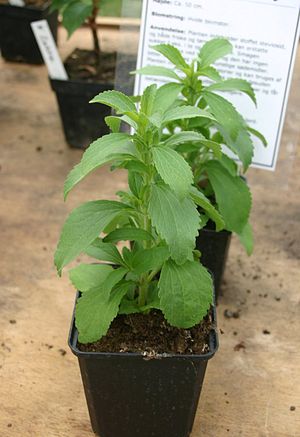
The chemical structure of the steviol glycoside was discovered in 1955. It became popular in Japan in the 1970’s, and is now used across the world. In the U.S. stevia and its extracts are legal only as dietary supplements. But in 2008 Rebaudioside A (an purified isolate of stevia) became licenced as a food additive. It goes under various trade names including Truvia, SweetLeaf, NuStevia and Reb A. Other stevia extracts remain banned in the US as a food additive and are banned altogether in some European countries. This appears to be a result of political pressures from industry (the herb of course cannot be patented).
Many Stevia extracts have a bitter aftertaste. Rebaudioside A has the least bitterness of all the steviol glycosides in the stevia plant. Stevia has been shown to be safe in most studies. Several benefits have been reported that do no occur with the artificial sweeteners. It has been shown to improve insulin sensitivity in rats. And so may have some benefit in reversing diabetes and metabolic syndrome. It may also help reduce hypertension.
 In my experience the herbal extracts (dietary supplements) do suffer from problems with bitterness. This depends on the brand and of course the foods being sweetened as well as personal taste. The purified stevia product, Truvia is available in stores and is definitely less bitter. I previously mentioned the stevia / erythritol blends that are available. I have used one called NuStevia No Carb Blend. It is twice as sweet as sucrose spoon for spoon and minimizes the bitterness by combining it with erythritol.
In my experience the herbal extracts (dietary supplements) do suffer from problems with bitterness. This depends on the brand and of course the foods being sweetened as well as personal taste. The purified stevia product, Truvia is available in stores and is definitely less bitter. I previously mentioned the stevia / erythritol blends that are available. I have used one called NuStevia No Carb Blend. It is twice as sweet as sucrose spoon for spoon and minimizes the bitterness by combining it with erythritol.
Stevia is generally considered safe. Stevia plants are available locally and can be grown outside during our summers or kept in a greenhouse over the winter.
Sugar alcohols
Sugar alcohols are formed when the carboxyl (ketone) group of a sugar is changed to a hydroxyl (alcohol) group. There are many sugar alcohols. Here I will the discuss the common ones used in foods and those which may be useful sugar substitutes. Here is a list of the sugar alcohols of interest.
|
Sugar Alcohol |
No. of Carbons |
Sweetness |
Calories/gr |
|
Glycerol |
3 |
0.6 |
4.3 |
| Erythritol |
4 |
0.7 |
0.2 |
| Xylitol |
5 |
1.6 |
2.4 |
| Sorbitol |
6 |
0.9 |
2.6 |
| Maltitol – disaccharide |
12 |
1.7 |
2.1 |
| Glucose (for comparison) |
6 |
1.0 |
4.5 |
All of these are sweet to varying degrees. None of these promote dental decay, as they can not be metabolized by the bacteria that cause it. The simplest sugar alcohol is glycol with two carbons. It is commonly used as antifreeze. It is sweet but is very toxic. All the other sugar alcohols are non toxic. They are of interest because they often behave like sugar in recipes and they generally taste like sugar. They are natural substances that are for the most part non-toxic. Yet they have low caloric and glycemic characteristics.
For the most part they are absorbed from the intestines poorly. Because of this with excess consumption some sugar alcohols can cause gas pains and diarrhea. Sensitivity varies and with regular exposure some tolerance usually develops. Some of them can be metabolized by humans and some cannot. In the U.S. all sugar alcohols are labeled as having 2.4 Calories per gram. This is absurd as some are absorbed or metabolized significantly at all. The characteristics of each are listed below.
Useful Sugar Alcohols
Glycerol

Is not low calorie, but has a low glycemic index. In small quantities it can facilitate energy production and improve hydration of the body. I use it to sweeten my tea. A healthful dose is about 4 Tblsp. Per day.
Erythritol
Is found in small quantities in some fruits and fermented foods. It is very poorly metabolized making it essentially non-caloric. It is less likely to cause GI upset than some sugar alcohols, as it is 90% absorbed. Most of it is then excreted unchanged in the urine. Like other sugar alcohols it does not promote tooth decay and it exhibits some of the bacteria starving properties of xylitol (see below).
Erythritol is also available as a blend mixed with the herbal sweetener stevia. This minimizes the bitterness often associated with stevia. The blend I use has about twice the sweetness of sucrose for a given measure.
Xylitol

Is another naturally occurring sugar alcohol found in small quantities in many fruits and vegetables. It is poorly absorbed so can cause GI upset. It is tolerated less well than erythritol but better than maltitol. It dissolves well in water and does not crystallize back out easily and so works well for sugar-free jams. It has less than half the calories of glucose or sucrose and like other sugar alcohols it has a low glycemic index.
Xylitol is considered a “tooth friendly” sugar alcohol because it inhibits decay causing bacteria and helps re-mineralize the enamel. About 3-6 grams of xylitol per day are needed for dental benefits. Xylitol may also help prevent osteoporosis. Its anti-microbial effects also help prevent ear infections, Candida, and many other infections, and asthma. Some studies show that high does may be toxic in dogs.
Sugar Alcohols best avoided
Sorbitol
Sorbitol is a sugar alcohol found in small amounts naturally in apples, pears, peaches and prunes. It is used in mouthwashes and toothpastes. It is sometimes used as a sweetener in foods. It is converted to fructose in the liver and probably has all the negative effects of fructose. But it also has a strong laxative effect, so little can be tolerated.
Maltitol
Maltitol is a disaccharide sugar alcohol made from maltose (two glucose molecules). Its properties make it well suited for sugar free candies, chocolates, chocolates, ice cream, and protein bars. Like sorbitol it has a pronounced laxative effect. BEWARE! Even small quantities can cause bloating and pain in some individuals. In many countries products containing maltitol have a government warning regarding its laxative effects. It contains about 2 Calories per gram and has a lower glycemic index than glucose.
The Food Based Sweetening Products

This is probably the most depressing of the articles on sweeteners. We all love choices. We all want to choose the best and healthiest sweeteners. But sadly, in all the abundance of products there is very little to choose from and all the choices are bad. Still, I have tried to give some hope. Clearly some of these sweeteners are less bad than others. I do what to emphasize that none of these sweeteners are likely to do much harm in small amounts and any of them can decrease your quality and length of life in large amounts.
The difference between these refined food based sweeteners is their composition. They are all made up of fructose, glucose or sucrose or some combination of the three. Since sucrose is rapidly broken down to its components (fructose and glucose) any of these sugars can be seen as a ratio of its fructose/glucose content).
Another difference is the degree of sweetness per cup. The sweeter the sugar the less you need to achieve a given degree of sweetness in a recipe. Fructose is quite a bit sweeter than sucrose and glucose is less sweet than sucrose. Invert sugar is simply sucrose broken down to fructose and sucrose. The total sweetness of one invert sugar (one molecule of fructose and one molecule of glucose) is about 130% higher than when these same molecules are combined into one molecule of sucrose.
The third difference is the presence and quantities of any additional trace nutrients. A few of these products have s notable amount of minerals and many have trace amounts. I would suggest that choosing a unhealthy luxury food based on its vitamin and mineral content may not be too logical. At best, moderate amounts of these sweeteners only a small amount of our overall dietary mineral needs can be met.
I have listed the sweeteners more or less in order of descending preference according to two criteria. First by the ratio of fructose to glucose. Generally, as emphasized in the previous article the less fructose the better. Secondly where two sweeteners have about the same ratio of fructose to glucose I have listed those with less sucrose first, as these will be somewhat more sweet than those with more sucrose.
My guiding principle is avoid fructose, but if there is fructose in your sweetener it is slightly preferable to get it as simple fructose rather than as sucrose, because you will need a bit less to get the same degree of sweetness.
Cellulose and starch are polymers (chains) of glucose. Neither are sweet. Starch is readily converted to glucose, mostly in the small intestine, so it does not activate the taste buds of the tongue. But metabolically is pretty much the same as eating sugar. However, some starches (called resistant starches) are broken down slowly and may useful as prebiotics, feeding beneficial microbes in our gut and not being absorbed. Cellulose is not digested significantly by humans and so is classified as a fiber. Fiber has many benefits, depending on type.
Glucose based sweeteners.
These first three products are made of primarily glucose. Bakers often prefer them because of their moisture retaining propertie

s.
Glucose/ Dextrose is available as dextrose or “grape sugar” – It is made from corn starch. Because it is glucose it is about 70% the s
weetness of sucrose.
Corn Syrup – Not to be confused with HFCS (high fructose corn syrup) is generally mostly glucose. However, it contains some fructose which varies in percentage depending on the source of corn syrup. Unfortunately, the percentage of fructose may be impossible to ascertain.
Glucose syrup is similar to corn syrup but more reliably close to 100% glucose. It is generally made from corn starch, but check the label if you are gluten sensitive as it may also be derived from wheat.
Mixed Fructose / Glucose sweeteners
Honey is 50% fructose and 50% glucose. It contains no sucrose. It is about 85% as sweet as sucrose. It contains small amounts of some minerals (especially iron and manganese). Sadly, much of the domestic honey supply apparently is artificially produced from white sugar. I have conflicting information as to the legality of this.
Invert sugar is just a mix of 50% glucose and 50% fructose. It is sometimes referred to as artificial honey.
Maple Syrup – Real maple sugar is derived from the sap of a few species of maple trees. It is essentially unrefined except to concentrate it by boiling off most of the water. It is composed mostly of sucrose. It contains small amounts of some minerals (especially potassium).

Sucrose is 50% fructose and 50% glucose. Sucrose is a disaccharide made of one molecule each of fructose and glucose. Common table sugar made from sugar cane or sugar beets is pure sucrose. Most fruits contain a mixture of sucrose, glucose and fructose. It is easily split into its component sugars by digestion in the mouth and in the small intestine (by the enzyme amylase). When it is split in the small intestine it can speed up the the absorption of the sugar into the bloodstream compared to honey or invert sugar (see below).
The following three sweeteners are made from sugar cane or sugar beets and contain almost pure sucrose. Depending on the degree of refining they may also contain small amounts of minerals (especially manganese, copper, iron, calcium, potassium and magnesium). Of course a better source of these is simply blackstrap molasses which is pretty much what is left of the sugar cane after the fiber and sugar are removed.
Evaporated cane sugar is primarily sucrose it contains small amounts of some minerals. A similar product is called sucanat. These are derived from whole sugar cane juice.
Brown sugar goes by many names. Most forms of brown sugar are just white sugar with a small amount of molasses added back. Molasses is a by product of sugar making and contains most of the minerals removed in the refining process. Some brown sugar is less processed than white sugar.
White sugar is pure sucrose derived from sugar cane or sugar beets.
High Fructose Corn syrup is corn starch that is has been treated with enzymes to convert some of the glucose into fructose. There are different grades of HFCS ranging from about 42% to 90% fructose. At the lower end it is basically invert sugar, at the higher end it is almost pure fructose.
Fruit concentrates – The sugar composition of various fruits will be discussed in a future article. But since fruit juice concentrates are sometimes used as sweeteners a few points will be made here. Most fruits contain free fructose and glucose in relatively equal proportions (such as grapes). Apple and pear juice contain a high percentage if fructose (approx. 70%). Plum contains mostly glucose (approx. 30%). Many of these fruit concentrates also contain beneficial nutrients including minerals and flavinoids (more on this later).
High Fructose sweeteners.
Many of these have been hyped based on their low glycemic index. The only thing that gives them a low glycemic index is their low glucose levels. The following sweeteners are mostly fructose. As discussed previously, large quantities of fructose are probably far more detrimental than glucose.
Coconut Sugar is made from the flower nectar of coconut and other palms. It is fairly unrefined. It probably is mostly fructose, although, precise numbers are difficult to come by.

Agave syrup has developed quite a reputation as a healthy sweetener. This seems to be totally undeserved. My best guess it that this is due to our perennial desire to have a healthy sweetener combined with the romance of tequila and Mexico. We are encouraged to imagine it just naturally dripping from these rugged plants. In actuality it is a highly refined product containing 56% – 92% fructose. Again the amount of fructose is variable and difficult to determine with any particular product. At its best it may not be much worse than white sugar, but it certainly is no better.
Natural Sugar Alternatives
Sugar Alcohols – In the following article I will discuss a number of sweeteners known as the sugar alcohols (glycerol, xylitol, erythritol, and maltitol). Some of these may be less harmful than the sugars mentioned above and perhaps even beneficial. Some of them (xylitol) are found in small quantities in fruit and other foods.
Fructose, the Evil Health Food (Sweeteners part 3)
When I was a child fructose was sold as a health food. It was promoted as vastly superior to sucrose (which was often referred to as “white death” by the health food fadists). Fructose sounds like a wonderful substance. Its very name comes from the Latin for fruit – Fruktus (which itself comes from the root Fruor – to enjoy). It’s got to be good for you.
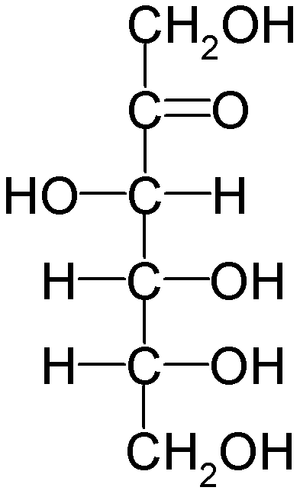
Fructose is part of our natural evolutionary diet. Fructose is second only to glucose in terms of quantities of sugars consumed. It is found in foods both as a monosaccharide (alone) and as joined with glucose as the disaccharide sucrose. Most fruits contain all three sugars glucose, fructose, and sucrose (glucose and fructose bonded together) in various proportions.
Fructose has two properties which were thought to give it superiority:
- It is much sweeter (1.7x) than sucrose, so less is needed.
- It is not metabolized like glucose, and it does not utilize insulin in its metabolism and was therefore erroneously believed to not create insulin resistance or to metabolic syndrome (see previous blog).
But is it really superior to other sugars?
Since the availability of table sugar which is composed of half fructose the average consumption of fructose has skyrocketed. Now fructose is also readily synthesized from starch to make products such as high fructose corn syrup. And now with the promotion of healthy sounding products such as agave syrup, Fructose the Evil Health Food has returned.
But not so fast! If it is not metabolized like glucose what does the body do with it. Five major problems arise from excess fructose consumption.
- Bacteria and yeasts can readily use it as a food source. Just like glucose, fructose contributes to dental caries, and chronic Candidiasis.
- Although it is indeed sweeter, it does not tend to produce the hormone (leptin) that gives us a feeling of satisfaction and fullness. So we tend to eat more of it.
-

Fatty Liver on CT scan Fatty Liver on CT scanOnce it is partially metabolized, like glucose, it can be used as energy or converted into fat. The problem is that its metabolism is extremely stressful to the liver. These metabolic issues of fructose can result in generalized inflammation, fatty liver, increased blood fats, insulin resistance, and metabolic syndrome (see previous article). With frequent exposure and high concentrations, fructose acts more like a liver poison than a food.Fructose is seven times more reactive than glucose. It can react with our tissues and form something called A.G.E.s (advanced glycolization endproducts). These reactions permanently damage tissue. You can think of age spots throughout your body including the vital organs such as our brain and heart. A.G.E.s have been associated with Alzheimer’s and heart disease. Essentially, excessive fructose causes premature aging.
- The biggest problem is related to how humans metabolize fructose. Fructose is entirely metabolized in the liver.
- Some people do not absorb fructose easily from the small intestine. This malabsorption can cause indigestion, bloating, and gas as the intestinal bacteria have a feast.
Sweeteners high in fructose are often hyped for their low glycemic index. This is really a type of false advertising. Glycemic index is a reference for how fast glucose is absorbed into the blood stream after ingesting a particular food. If a substance doesn’t have any glucose of course it has a low glycemic index. Yes, it is great that fructose isn’t glucose. But it is terrible that is fructose.
Basically, when it comes to a contest of which is better for you fructose or glucose it a matter of the lesser of two evils. Both are bad in excess, but fructose clearly causes the most permanent damage.
Fruit obviously can be healthful. Most of the nutritive (caloric) sweeteners (such as honey, sugar, HFCS, agave syrup, maple syrup, etc.) also contain both glucose and fructose. Are any of these better than another? In the next article I will discuss some of the foods containing glucose, fructose and sucrose to help you decide how much is safe and which of these foods have other benefits to outweigh the harm.
Featured Supplements
These are available in the office or click on the link for further information or to order them at the Dr. Michels Internet Store. If you are not sure what might be of the most benefit call for a consultation.
LVR Formula by Pure Encapsulations -A broad-spectrum, synergistic combination of concentrated herbal extracts that nutritionally supports liver function and protects the liver from free radical damage that can impair proper functioning.
CarbCrave Complex by Pure Encapsulations – CarbCrave Complex is designed to help curb excessive carbohydrate intake and to help moderate appetite by supporting healthy brain chemistry and mood.
Alpha Lipoic Acid by Pure Encapsulations – A water and lipid soluble antioxidant; supports glucose metabolism and nerve health. Alpha Lipoic Acid is a multifunctional, versatile nutrient that plays a key role in the antioxidant network and the metabolic process. Protective for the liver and to help prevent AGEs.
Bioflavinix by Pure Encapsulations – Bioflavonex combines natural, concentrated bioflavonoid extracts for cardiovascular, liver, and cellular antioxidant protection. Contains grape seed, green tea, ECGC, milk thistle, resveratrol.
Resveratrol by Pure Encapsulations – Resveratrol is a compound often associated with the health benefits of red wine, because of its powerful antioxidant and cardioprotectant properties. It promotes cardiovascular health through its antioxidant action and its ability to promote healthy platelet function and maintain healthy arachidonic acid metabolism. Pure Encapsulations Resveratrol is derived from one of the richest known sources, Polygonum cuspidatum, an herb utilized for centuries. Protective against the damage of metabolic syndrome and helps prevent AGEs.
Antioxidant Formula by Pure Encapsulations – AntiOxidant Formula offers a synergistic, broad spectrum of antioxidants designed to protect against free radical damage in every cell of the body. Contains NAC, milk thistle, fat soluble vitamin C, mixed carotenoids, natural vitamin E, selenium, riboflavin, and zinc.
 (Click here for last article – Glucose: The Essence of Sweetness)
(Click here for last article – Glucose: The Essence of Sweetness)
.
Glucose – The Essence of Sweetness (Sweeteners part 2)

Glucose is the major dietary sugar. Its very name is derived from the word for sweetness in Greek (glukus). It is a major source of energy production of most life.
Glucose can be found alone as a simple sugar (or monosaccharide) or combined with itself or other sugars into bigger molecules. When sugars are bonded in pairs they are know as disaccharides. Two glucose molecules together is called maltose. The other main disaccharides are sucrose and lactose. These both contain one glucose molecule attached to another simple sugar (fructose and galactose respectively). Maltose is made during the enzymatic breakdown of starch such as occurs in sprouting. Lactose is the sugar found in milk. Sucrose is common table sugar and is in many natural fruits. These sugars will be discussed in more detail in future articles.
Longer chains of glucose can come in two major types, starch and cellulose, but only starch can be broken down into glucose by our digestive systems (by enzymes in our saliva and small intestine). .Cellulose on the other hand is a dietary fiber meaning humans don’t have the enzymes to break it down into sugars. It remains in our gut as bulk and food for microbes.
Sweetness being a result of the specific interaction of these substances with the taste buds (receptor organs on the tongue) is variable. Sucrose is taken as the standard and is given a sweetness rating of 1. Glucose is almost as sweet with a rating of .0.7. Maltose is not very sweet and has a rating of about 0.4 (less than half as sweet as sucrose). Lactose is less sweet still with a rating of 0.16. Starch and cellulose don’t taste sweet (except that a small amount of starch is broken down to glucose in our mouth by salivary enzymes).
These naturally occurring sugars can all be metabolized to form biological energy. Glucose is the major energy source of many animals including humans. If glucose is so important why should it be a health concern? The simple answer is that sugar is a necessary important nutrient; IF it is consumed in the forms and quantities we are adapted to in balance with the other macronutrients, and with the essential micronutrients needed to properly use it and avoid its harmful effects.
Our evolutionary diet (often referred to as the Paleolithic diet) contained relatively small quantities of mono and disaccharides. Starches were also a smaller part of the human diet and were rarely available in concentrated forms, but combined in wild foods with lots of fiber and other nutrients. They were also generally eaten with significant amounts of animal foods with abundant protein, fat and other nutrients.
Any change from the diet we have adapted to over millions of years is bound to cause a multitude of health consequences. Below I will introduce three major issues that can result from increasing glucose as sugars and starch in our diet.
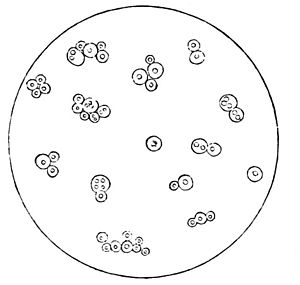
The first sugar issue I will discuss is dysbiosis and chronic Candidiasis. The second and perhaps most important sugar issue is insulin resistance, metabolic syndrome, diabetes and other associated diseases. Thirdly, I will discuss obesity more specifically.
Dysbiosis and chronic Candidiasis
I mentioned that many animals utilize glucose as a primary energy source. Likewise many bacteria and funguses also are adept at using glucose as a fuel. Our guts, mouths and skin are covered with microorganisms. It is estimated that we are hosts to 10 times as many microbes as human cells in our body. Invasions of undesirable microbes or an imbalance of beneficial or neutral microbes is called dysbiosis. One group of microbes that loves sugar and starch is yeasts. Yeasts are unicellular fungi. The yeasts that inhabit our skin and the mucus membranes of our bowel is called Candida.
When we are healthy these yeasts are kept in balance by certain bacteria, and by our immune system. Antibiotics can kill these beneficial bacteria. The beneficial flora also need proper fiber as a food source and home. Too much sugar and starch can overfeed the yeasts. The results of the decline of protective flora and overfeeding the yeast is overgrowth of the yeast cells. The yeasts expand their territory into tissues where they don’t belong. Worse they can change form and become more invasive, penetrating into the tissues. Still worse they can produce various toxins causing a variety of symptoms. Over time these yeasts can overwhelm the immune system and it no longer is able to keep them in check.
Very long lists of conditions have been attributed to chronic Candidiasis. A few of the more common are listed here: Chronic Fatigue, Syndrome, Irritable Bowel Syndrome, constipation, diarrhea, belching, bloating, sinusitis, chronic headache, muscle and joint pain, and poor concentration.
The science of symbiotic flora is still in its infancy. It is becoming clear that exposure to various microbes and healthy populations of the corrects flora play an important role in the development of the immune system and the mediation of allergies. Tooth decay (dental caries) might also be seen as a form of dysbiosis related to nutrition and sugar. It is caused by an overgrowth of acid forming bacteria, especially Streptococcus mutans on the teeth.
Insulin resistance, metabolic syndrome, diabetes
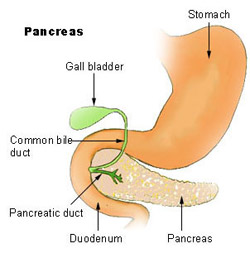
Genetic predisposition, nutrient deficiencies, central obesity, lack of exercise and excess sugar and starch can cause
these related problems. Essentially, every time we absorb glucose into the blood we trigger an ancient sugar handling mechanism. Special endocrine tissues in our pancreas produce the hormone insulin. Insulin receptors in our tissues signal the tissues to pull the sugar out of our blood and convert it to energy and store the extra as glycogen (a form of starch) in the liver or as fat in our fat cells.
Age combined with the risk factors above cause our insulin receptors become less receptive. When this is severe enough we have diabetes (type 2), too much insulin, little insulin receptivity, too much sugar in the blood. Metabolic syndrome is marked by insulin resistance along with associated increased triglycerides and LDL cholesterol, and high blood pressure. Metabolic syndrome is associated with a much increased risk of cardiovascular disease (heart attack and stroke), diabetes, kidney disease, liver disease, and peripheral artery disease. This is many of the serious degenerative diseases of modern humans.
Obesity
This is both a cause and effect of metabolic syndrome discussed above. I list it separately because obesity is strongly associated with excess sugar and starch intake. We are genetically programmed to crave these substances; especially, if we have ancestors that were subject to periodic famine. Those individuals that ate more hi sugar and starch foods when they were available put on extra pounds that enabled them to survive in times of famine.
In today’s world most of us have continuous access to sweet and starchy foods in unlimited quantity. Worse, these foods tend to stimulate additional craving for more of the same. The results are obvious. In addition to the disease associated with metabolic syndrome obesity is a risk factor for many conditions such as: depression, back pain, carpal tunnel syndrome, osteoarthritis, cancer, sleep apnea, asthma, reflux disease, gall stones, menstrual disorders, and pregnancy complications.
Conclusion
I conclude this article on glucose with some practical ideas and a few of my favorite related nutritional supplements.
Most importantly, avoid excess sugar and starch. Pound for pound sugar is one of the cheapest ingredients added to processed foods, so it is added to many food items in which you wouldn’t expect it. Read all label. Pure glucose is labeled as dextrose and sometimes as grape sugar. Remember that glucose is also ½ of sucrose (table sugar) and similarly a major component of most sweeteners (as will be discussed later in this series). Fruit juice often has added sugars. Even if it has no sugar added, fruit juice is a concentrated food, high in sugars and is best consumed in small amounts and diluted. Dried fruit is also very concentrated. I will discuss the sugar content of various fruits in a future article.
Glycemic index is a useful concept. It is the rate at which the sugars in a food are absorbed into the blood stream. The goal is simply to avoid shocking the system with too much glucose into the blood too fast. I am less concerned with the glycemic index of individual foods than with general eating habits. As discussed above, fibers, fats, and protein all slow down the absorption. Eat slowly and keep in mind that it takes time for your brain to register that you have eaten and that you are full. Eat whole foods when possible. Eat plenty of non-starchy vegetables.
Dr Sears a cardiologist and the originator of the Zone diet suggests the optimal diet consist of approximately 30% of our caloric intake should be carbohydrates (starch and sugar). 40% should be protein, and 30% fat.
Concentrate d sweets like candy and deserts can become an addictive habit. Physically, we become adapted to the stimulation and pick-up and develop cravings. Sugar and starch can also be used as emotional comfort foods. Eliminating the sweets, eating high protein, and nutritional supplements can help with the cravings. But like all addictions we must get the sugars out of reach and out of the house to heal.
d sweets like candy and deserts can become an addictive habit. Physically, we become adapted to the stimulation and pick-up and develop cravings. Sugar and starch can also be used as emotional comfort foods. Eliminating the sweets, eating high protein, and nutritional supplements can help with the cravings. But like all addictions we must get the sugars out of reach and out of the house to heal.
Featured Supplements
These are available in the office or click on the link for further information or to order them at the Dr. Michels Internet Store. If you are not sure what might be of the most benefit call for a consultation.
For Dysbiosis and Candida:
Beta Glucan Synbiotic Formula by BioImmersion Inc. – Powerful combination of Probiotic & fibers for regular bowel habit, weight management: promotes satiety and balances blood sugar. No fillers, flowing agents or excipients of any kind. hardy and viable pedigreed Original strains: 25 billion L. acidophilus, B. longum, L. rhamnosus, L. plantarum, S. thermophilus. organic matrix USDA patented hydrocolloidal beta glucan oat bran , organic whole red beet root and organic inulin from chicory fiber. These fibers also provide a matrix to help establish the probiotics. Available at the office.
G.I. Fortify by Pure Encapsulations – Support the function, microflora balance, integrity, tone, comfort, cellular health and detoxification of the GI tract. Contains: Psyllium, flax, l glutamine, DGL licorice, marshmallow root, aloe vera, slippery elm, and triphala.
Nutri-Flax by Pure Encapsulations – Flax seed fiber in capsules. High quality fiber to promote healthy flora.
A.C. Formula II by Pure Encapsulations– Herbal formula to control Candida and promote healthy flora.
For Glucose Metabolism:
PureWeigh Premeal beverage by Pure Encapsulations– Designed to reduce appetite, cravings, boost energy as a pre meal beverage or meal substitute. Contains, protein (soy and whey), fibers, low glycemic carbohydrates (slo-carb), and vitamins and minerals. French vanilla flavor.
GlucoFunction by Pure Encapsulations – is a combination of key nutrients, antioxidants and herbal extracts designed to promote healthy glucose uptake and metabolism, microcirculation, and pancreatic function to support healthy glucose utilization.
CarbCrave by Pure Encapsulations – Supports healthy neurotransmitter metabolism, affecting the appetite and mood centers of the brain. 5-HTP is a precursor for serotonin, the same neurotransmitter released by the consumption of carbohydrates and associated with enhanced mood. dl-phenylalanine supports dopamine and epinephrine production, responsible for the sensation of well-being. Vitamin B6 is integral as a cofactor for neurotransmitter synthesis. Rhodiola and ashwagandha are believed to encourage the activities of these neurotransmitters while strengthening the body’s resistance to stress and fatigue, common triggers for undesirable eating behaviors.
Gymnema Sylvestre by Pure Encapsulations – Traditional herb used for improved pancreas function and glucose metabolism. Balances blood sugar, reduces sugar cravings.
Nutrient 950 by Pure Encapsulations– is a complete hypo-allergenic, high-nutrient, bioavailable multi-vitamin, multi-mineral and trace element supplement. It offers an advanced mineral delivery system, and the highly desirable coenzyme forms of B vitamins to promote optimal absorption of the nutrients. In addition, it provides a high profile of free radical scavenging antioxidants. This is a gentle, hypo-allergenic formula which is well tolerated by sensitive individuals. Available with and without iron.
Too Much Sweetness – Sugar and Sweeteners

Many of you saw my Halloween costume as Dickens’ Ebenezer Scrooge. Some asked if I was the good scrooge or the bad Scrooge. I replied that I was drawn to the character as a representation of positive transformation especially in response to confronting our own mortality. It the spirit of the transformed Scrooge I waited till the end of the holiday season to publish this article on the detrimental effects of excess dietary sugar. Hopefully, you have had your fill of sweets and are ready to shift to a healthier diet in the New Year.
I preface this article with the belief that I am not a purist, nor do expect others to be so. Rather I believe in choosing your vices wisely.It is important to know which vices are likely to kill or maim you before your time;. and to know how to ameliorate or reduce the risks. The purpose of this series of articles is not to point a finger at your indiscretions but to provide information to help you make choices.
This will be a series of short articles on sweeteners in our diet. This first one will be a general discussion and the next few will go into more detail on some of the different nutritive and non-nutritive choices available.
Sweetness can be defined as a subjective experience of the brain that normally occurs when sweetness sensors in the tongue become activated. This activation occurs when the sensors are exposed to chemicals of a certain shape The most commonly occurring natural substances that we perceive as sweet are sugars.
Biologists have shown a preference fro sweets as far back as many motile bacteria. Most animals show a clear preference for sweets (felines (cats) are an exception with no ability to taste sweet). Primates have a well developed sweetness sense. Considering there is no need in the human diet for sugar one might ask why did the desire for sweets evolve?
Through most of human existence the only sweets we normally encountered was fruits and berries. These are a source of calories which were often in short supply. In addition most wild fruits had far less sugar than modern domestic varieties. It was difficult to over-indulge in sugars except perhaps seasonally when a few extra pounds might also have some survival value to hold us over in less abundant seasons.
In addition, wild fruits tended to be small with a much higher ratio of skin and seeds to pulp (containing the sugar). It is the colorful skins and seeds where the beneficial flavinoids and other nutrients are concentrated.
 Today we have a much bigger selection of sweets. Here are some examples of sweets available now that were not available to our Paleolithic predecessors.
Today we have a much bigger selection of sweets. Here are some examples of sweets available now that were not available to our Paleolithic predecessors.
- Sweeter and concentrated fruits and juices available all year
- Refined sugars taken from natural sources
- Chemically, genetically, and enzymatically altered natural sources
- Natural and artificial non- nutritive sweetenerMany of these natural and synthetic substances can have negative health consequences. I will review all of these in upcoming articles as follows.
- The major dietary sugars glucose, fructose, sucrose and lactose.
- The major sweeteners and sweet foods including fruit, juice, table sugar, high fructose corn syrup, honey, agave syrup, maple syrup, date sugar, coconut and palm sugar.
- The sugar alcohols including xylitol, erythritol, and maltitol
- Stevia (from the herb)
- Synthetic sweeteners – Including Splenda (sucralose, Nnutrisweet (aspartame), sacchararin, and others.
In the mean time give some thought to how much sweetness you need in your diet. Many report that mildly sweet foods taste sweeter and appreciation of healthy food in general increases with avoiding overly sweetened foods. Most traditional cultures have balanced their desire for sweetness with appreciation for other flavors including bitterness. Seek balance. You can have too much of a good thing.




